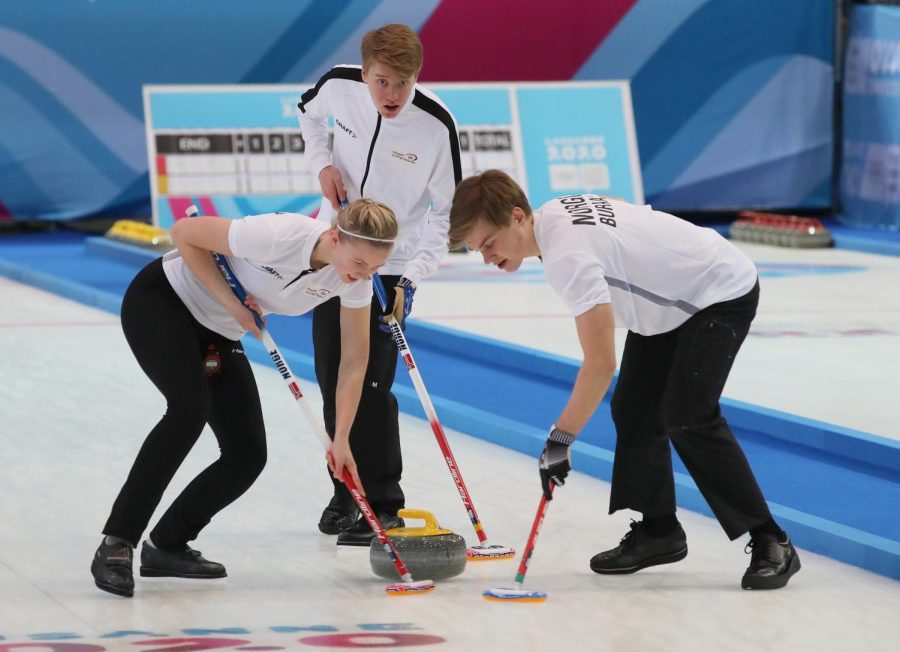The History of Curling
March 5, 2022
Although it’s one of the most mocked Winter Olympic sports, curling has a unique origin story–almost as unique as its rules. As Swedish Gold-Medalist Eva Lund puts it: “There is never a right or wrong in curling… it’s not only the decision but it’s execution.”
A game of curling is executed by sliding polished granite stones, known as “rocks”, towards a target made of four concentric circles, which is known as the “house”. Teams are made up of four players each, and they each take turns pushing the rocks across the “curling sheet” and towards the house, aiming to get as close to the center circle as possible. Since rocks are allowed to be pushed by teams or opposing ones, the scores are determined at an “end” or the end of a round–with a game concluding after 8 or 10 ends.
Curling is very similar to games like bowls (or bocci as Italians know it) or shuffleboard. Where curling diverges from these games is where people usually start laughing–when players begin to rapidly sweep in front of a rock as it makes its way towards the house. As a player sweeps, the rock is pushed into a specific path, allowing players to readjust a rock into the best position as it approaches the house. The secret behind this sweeping technique is answered by friction: when players sweep, they are decreasing the amount of friction–therefore preventing the stone from arcing off the curling sheet.
While curling has developed into a precision sport today, its origin story is much more humble–starting on frozen-over ponds and not man-made curling sheets. Its roots can be traced back to Scotland, where a curling stone inscribed with the year 1511 was found after a pond was drained. Various written records and even a few paintings document curling as a popular winter sport through the 16th century, although it looks significantly different from the sport we know today.
In 1620, the earliest record of the word “curling” was recorded in a poetry work by Henry Adamson. The “roaring game”–a nickname earned because of the sound of stone traveling over ice makes–was a game with casual rules until the 18th and 19th centuries. As curling spread across the globe (largely by Scottish immigrants), many curling clubs began to create their own standards.
The Olympics Committee named the Royal Caledonian Curling Club as the creators of the first official rules. A committee of The Royal Caledonian Curling Club split off and eventually grew into the World Curling Federation in 1982 after talk of it becoming an official Olympic sport arose.
Actually, curling made its Olympic debut in 1924 but was only considered a demonstration sport, meaning that its outcomes were not officially considered. This trend continued in the 1932, 1988, and 1992 games until 2006, when curling was made an official Olympic sport.
From there, curling has only evolved–both in technique and popularity. Today it is one of the few Olympic sports with a co-ed event (started in 2018 and known as “Mixed Doubles”) and its leading countries include Canada, Scotland, and Sweden (with America trailing close behind).
As the Olympic newsite reports, curling is experiencing “a rise to prominence of Asian and mainland European nations on the professional circuit,” with some clubs around the world gaining hundreds of new members at a time.
Curling is “ranked at 10 out 15 for the most followed Winter Olympic sports among fans in the United States” by Statistica–but it still has a long way to go before people begin to take the sport seriously. But really, whether you’re enjoying the game for its required precision or comedic mechanics–curling is a sport deserving of recognition and its spot on the Olympic roster.
Photo courtesy of COMMONS.WIKIMEDIA.ORG

